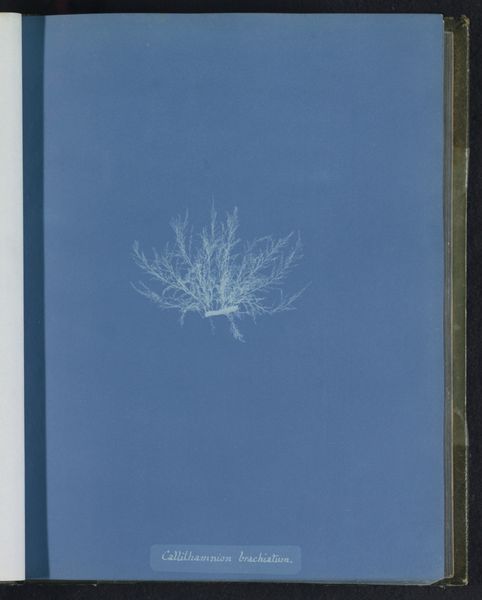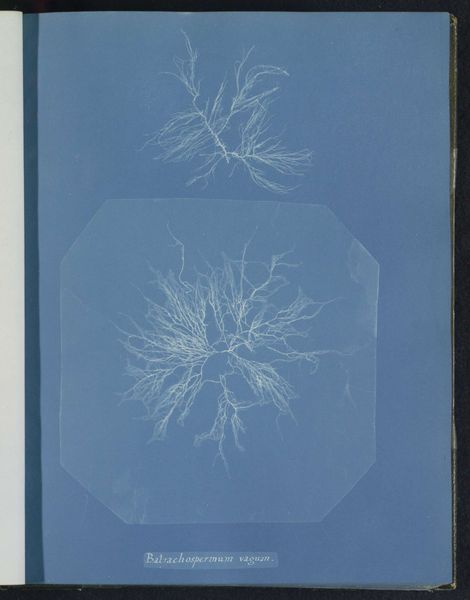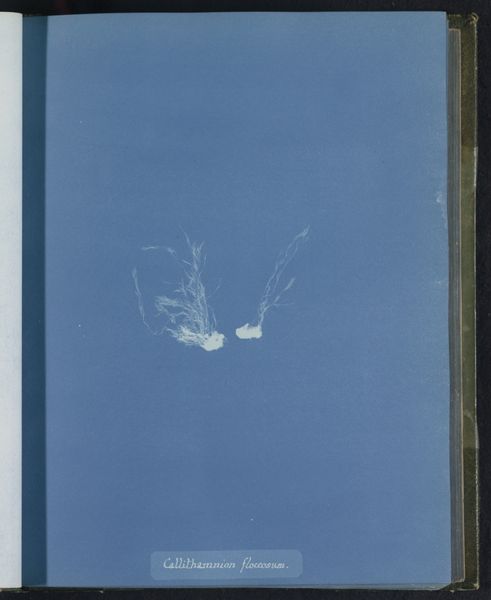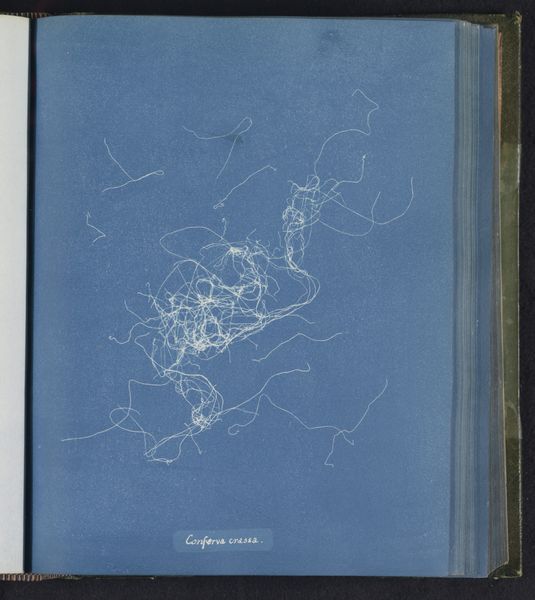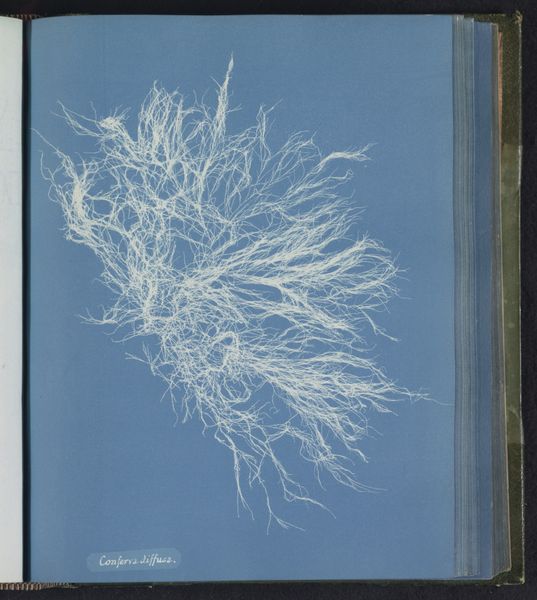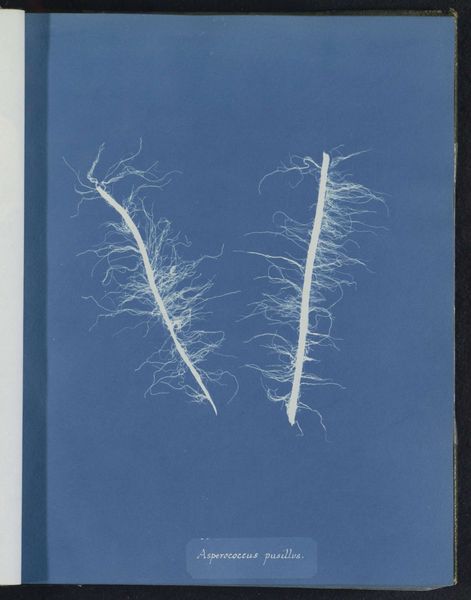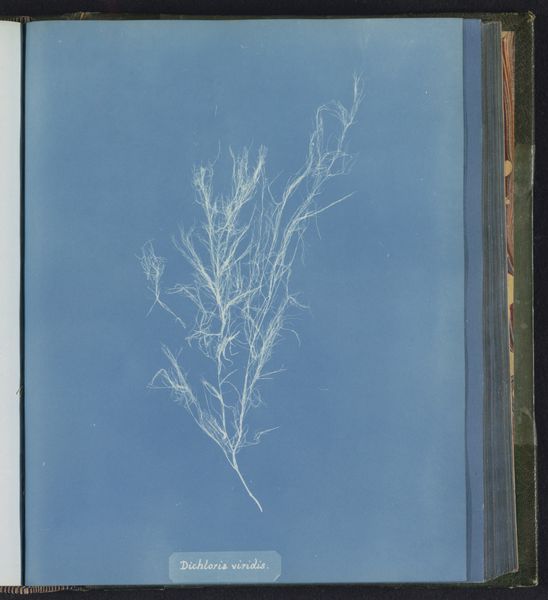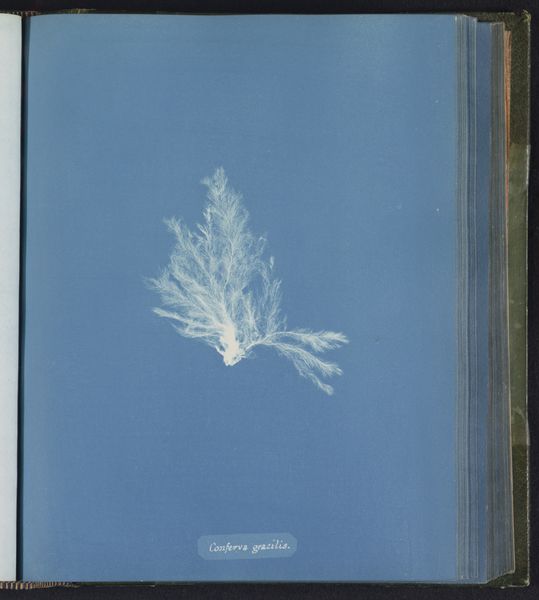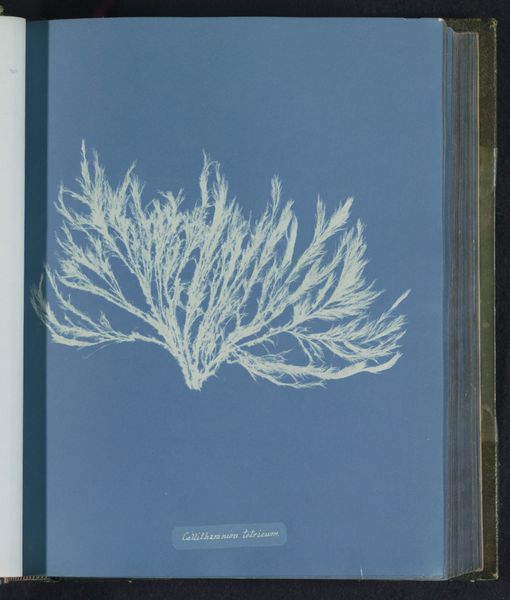
print, cyanotype, photography
#
still-life
# print
#
cyanotype
#
photography
Dimensions: height 250 mm, width 200 mm
Copyright: Rijks Museum: Open Domain
Curator: Anna Atkins created this cyanotype, Batrachopspermum stagnale, sometime between 1843 and 1853. Editor: It's remarkably ethereal. That stark white against the deep cyan… it almost feels like looking at a constellation, something distant and beautiful suspended in time. Curator: Atkins made these cyanotypes as a way of documenting different species of algae. What interests me is the method. The process collapses the boundary between artistic vision and scientific study. Cyanotype printing allowed her to directly capture the algae's form, using light and chemical reactions on paper. The result functions simultaneously as botanical illustration, photograph, and artwork. Editor: Absolutely, and thinking about the position of women in science at that time is key. Often relegated to assisting roles, women like Atkins found ways to contribute substantively. Photography afforded new forms of authority outside traditional scientific establishments. Curator: And it is also worth thinking of the economic dimension in her process: who produced those materials and at what cost. Editor: Right, we can trace these things back to issues of labour and resource extraction. Plus, considering the audience for this work. Was it intended for a specific scientific community or a wider, more general public? It prompts reflection on access to scientific knowledge and its relationship to art. Curator: I would also add the relevance of these photograms, for example, in the contemporary discussion of ecological vulnerability, considering our environment's uncertain future and historical narratives linked to environmental change. Editor: So, we began with an aesthetic reaction to its otherworldly quality, and ended with a discussion about knowledge economies and environmental fragility. Curator: Exactly. What a process, and what a unique material rendering of nature!
Comments
No comments
Be the first to comment and join the conversation on the ultimate creative platform.

